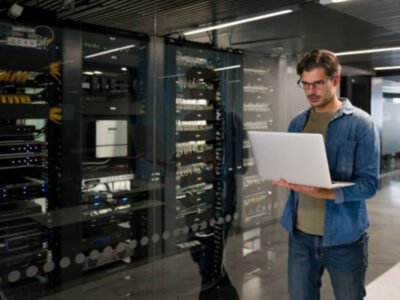Water shortage is a major issue worldwide. As a result, businesses increasingly recognise the importance of adopting sustainable practices for environmental and economic reasons. Water-efficient plumbing systems are critical for reducing water waste and encouraging appropriate water management in corporate buildings. We will look into many water-efficient plumbing technologies and techniques businesses use to reduce water use and contribute to a more sustainable future.
Understanding The Water Crisis
Before getting into the water-efficient plumbing solutions, it is important to establish the scope of the water situation. According to the World Economic Forum, water shortage is one of the most significant global concerns regarding both effect and possibility. Businesses are essential in tackling this issue since they consume alot of water, especially in industrial and corporate facilities. Let us look into the various ways you can reduce waste in corporate facilities
Low-Flow Fixtures
Using space-saving and low-flow fixtures simultaneously is an extremely effective way to reduce water usage in business facilities. These cutting-edge fixtures are designed to utilise the least amount of water possible without sacrificing functionality. Consider low-flow toilets, which require less water to flush than standard toilets and can save a significant amount of water over time. Furthermore, incorporating space-saving fixtures into regularly used restrooms in commercial settings maximises the use of available space while also conserving water.
Furthermore, technological developments have guaranteed that low-flow fixtures are just as efficient as traditional equivalents, making the move easier for staff and tourists to check it out and use.
Smart Irrigation Systems
Corporate buildings usually contain substantial landscaping that requires constant irrigation. Traditional irrigation methods can be inefficient, resulting in overwatering and wasteful waste. Smart irrigation systems provide a solution by combining sensors, meteorological data, and real-time monitoring to optimisae watering schedules.
These systems can change watering schedules and volumes based on soil moisture, weather forecasts, and plants. Smart irrigation systems help to save water in corporate landscapes by eliminating wasteful watering and ensuring that plants receive the appropriate quantity of water.
Greywater Recycling System
Greywater, or reasonably clean water produced by hand washing and showering, can be recycled for non-potable purposes within a corporate site. Greywater recycling systems enable organisations to catch and cleanse wastewater for reuse in flushing toilets, irrigating landscaping, and other non-drinking water uses.
While greywater recycling systems need an initial investment, they provide long-term advantages by reducing dependency on freshwater sources and cutting total water costs. Adopting such sustainable methods increases a company’s reputation as an ecologically responsible institution.
Leak Detection and Repair
Undetected leaks can result in substantial water waste, and in a large corporate site, detecting leaks is critical. Advanced leak detection systems with sensors and monitoring tools can identify leaks in real-time, allowing facility managers to resolve problems quickly.
Regular maintenance and proactive leak detection save water and extend the life of the plumbing infrastructure. Businesses can set up a preventative maintenance programme to ensure that plumbing systems stay efficient, reducing the chance of leaks and unexpected water loss.
Water-Efficient Appliances:
Beyond fixtures, corporate buildings frequently use water-consuming equipment such as dishwashers and washing machines. Upgrade to water-efficient appliances with high Energy Star ratings to drastically cut water and energy use. These appliances are intended to consume less water while providing maximum performance, making them an excellent investment for environmentally concerned organisations.
Employee Awareness and Education
Educate your staff on the significance of water conservation. To create a more sustainable workplace, you must provide rules for responsible water usage. Simple things, such as encouraging staff to report leaks as soon as possible and promoting water-saving techniques in toilets and kitchens, will lead to a collaborative effort to improve water efficiency. Employee involvement programmes and awareness initiatives will help employees feel responsible and proud of their contributions to the company’s sustainability goals.
Data Monitoring and Analysis
Data monitoring and analytics can help optimise corporate facilities’ water consumption. Installing sensors and meters throughout the plumbing system allows for real-time monitoring of water use trends. This data can be analysed to detect inefficiencies and apply targeted solutions.
Businesses that embrace data-driven techniques constantly improve their water management tactics, ensuring water-efficient plumbing systems stay successful in the long run. Data analytics can give insights into seasonal changes, allowing facilities to adjust their water consumption to changing environmental circumstances.
Government Incentives and Certification
Many governments and environmental organisations incentivise enterprises that use water-efficient strategies. Corporate facilities can benefit from these incentives, including tax credits, subsidies, or certification programmes. Obtaining certifications such as Leadership in Energy and Environmental Design (LEED) shows a dedication to sustainability and can also result in financial rewards.
Rainwater Harvesting Systems
Businesses in areas with consistent rainfall should consider rainwater collection systems as a sustainable water supply. Installing collecting systems on rooftops enables corporate buildings to harvest rainwater and store it for non-potable purposes. This captured rainwater can be used for landscape irrigation, cooling systems, and toilet flushing.
Rainwater harvesting lessens the demand for municipal water supply and offers a decentralised water source, especially useful during droughts or water shortages. Proper filtering and treatment technologies guarantee that gathered rainwater satisfies the quality requirements for its intended usage.
Dual Flush Systems Toilets
Dual-flush toilets provide a simple yet efficient method for reducing water use in restrooms. These toilets offer two flushing options: one for lower water volume and one for solid waste. Dual-flush toilets empower people by allowing them to use water more effectively depending on the waste they dispose of.
Integrating dual-flush toilets into corporate facilities can result in considerable long-term water savings, and the transition is frequently painless for people used to standard flush toilets. This slight change in lavatory fixtures creates a more water-conscious workplace without losing user convenience.
Recycling of Water in Manufacturing Processes
Water-efficient plumbing solutions for manufacturing companies extend beyond office areas. Implementing closed-loop water recycling systems in industrial processes can help reduce water discharge and the total water footprint of the firm. These systems collect and clean manufacturing wastewater, enabling it to be reused in the same operations.
Companies that recycle water in manufacturing save this valuable resource and reduce the environmental effects of industrial emissions. This integrated approach to water efficiency is consistent with the concepts of the circular economy, in which resources are used more sustainably by recycling and reusing.
Community Involvement and Collaboration
Corporate responsibility goes beyond the borders of the office building. Engaging local people in water conservation programmes can have a more considerable impact. Collaboration with neighbouring companies, participation in community activities, and support for local water conservation programmes may all help to improve the area’s overall water resilience.
Community participation also allows corporate facilities to exchange best practices, learn from one another, and work together to overcome water concerns. Businesses that develop a feeling of shared responsibility help to establish a more sustainable and water-conscious community.
Life Cycle Assessments for Plumbing Systems
Businesses can perform life cycle assessments (LCAs) for their plumbing systems to improve water efficiency even more. LCAs assess the environmental effect of a product or system across its full life cycle, from raw material extraction to disposal. Applying LCAs to plumbing systems helps discover opportunities for improvement, influencing decisions on materials, designs, and maintenance procedures.
Businesses that evaluate the whole life cycle of plumbing systems make educated decisions that maximise water efficiency while minimising environmental impact. This guarantees that sustainability is included in a corporate facility’s water management plan.
Continuous Improvement and Innovation
As technology advances, corporate facilities should remain committed to ongoing improvement in water efficiency. Regularly reviewing and updating plumbing systems to reflect the newest advances ensures that organisations stay at the forefront of sustainable practices.
Encouraging an innovative culture within the organisation creates an atmosphere where water-efficient plumbing solutions are constantly studied and implemented. This drive to innovation benefits the environment and positions the organisation as a sustainability leader.
Conclusion
Corporate facilities play a critical role in promoting water-saving initiatives. Water-efficient plumbing solutions promote environmental stewardship, community well-being, and long-term economic viability. By adopting these solutions, corporate facilities can pave the road for a more water-resilient and ecologically responsible future. Be part of the solution to help reduce water waste and follow relevant recommendations as stated by https://meganewsmagazines.com/












